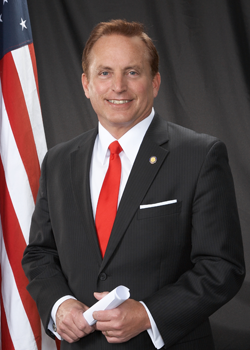A couple of years ago, I would have said State Representative Dwayne Alons (House district 4). Longtime Bleeding Heartland readers may remember Alons as the guy who asserted during a committee hearing on greenhouse gas emissions that global warming would be good for Iowa because warmer temperatures helped ancient Mayans grow taller and stronger than today’s men and women. The following year, Alons remarked, “We shouldn’t be as concerned, actually, about warming, especially now that we have modern refrigeration and air conditioning.”
Alons sets the bar high in terms of cluelessness, but after reading this piece by Jason Hancock today, I think State Representative Jason Schultz (House district 55) could give him a run for his money. Schultz has introduced House File 2313, which stipulates,
1 1 Section 1. NEW SECTION. 602.1100 Judicial authority.
1 2 1. A judicial officer shall not use judicial precedent,
1 3 case law, penumbras, or international law as a basis for
1 4 rulings. A judicial officer shall only use the Constitution
1 5 of the United States, the Constitution of the State of Iowa,
1 6 and the Code of Iowa as the basis for any ruling issued by such
1 7 judicial officer. The only source material that may be used
1 8 for interpreting the Constitution of the United States by a
1 9 judicial officer in this state shall be the Federalist papers
1 10 and other writings of the founding fathers to describe the
1 11 intent of the founding fathers, and if such source material is
1 12 used, the full context of the source material must be used by
1 13 the judicial officer.
1 14 2. This section is not reviewable by the court.
1 15 3. A violation of this section by a judicial officer shall
1 16 be considered malfeasance in office and subjects the judicial
1 17 officer to impeachment under chapter 68.
Bad ideas are not in short supply at the Iowa Capitol, but Schultz has taken things to a new level of stupidity here. No precedent and no case law, really? I have never heard of a so-called “strict constructionist” who would prohibit judges from citing previous court rulings in forming their opinions. In effect, Schultz is saying judges have to reinvent the wheel in almost every case. Yet conservative jurists usually lean toward respecting precedent.
Schultz would not allow any judge to consult historians’ work on the Constitution or the Federalist Papers either, as if there can be no ambiguity about what 18th-century language was meant to convey.
Mr. desmoinesdem reminds me that even U.S. Supreme Court Justice Antonin Scalia, a critic of citing foreign law in U.S. courts, has cited international law before when interpreting a treaty. In a recent case Scalia even cited the Babylonian Talmud, which is more than 1,000 years old.
If you’re wondering why Schultz wants to ban “penumbras,” that term alludes to the idea that there is a right to privacy, even though the Bill of Rights does not contain the word “privacy.”
Schultz’s bill isn’t going anywhere, and Drake University law professor Mark Kende notes that it would be unconstitutional in any event.
Like many Iowa Republicans, Schultz appears not to have a solid grasp of the judicial review concept. His support for a bill that would restore elections for Iowa Supreme Court justices indicates that he’s not sold on judicial independence. But even in the context of bad Republican ideas, House File 2313 stands out. Schultz is angry that the Iowa Supreme Court cited Iowa case law in its Varnum v Brien ruling last year, so the solution must be to ban judges from considering case law.
Not only is Schultz ignorant, he also demonstrated an impressive mean streak by introducing a bill this session “that would remove protections for gay, lesbian and transgender students from an anti-bullying law passed in 2007.” (More on that here.)
Iowa politics-watchers, who do you think is the most embarrassingly ill-informed member of the Iowa legislature? Make your case in this thread or e-mail me confidentially: desmoinesdem AT yahoo.com.
Continue Reading...


